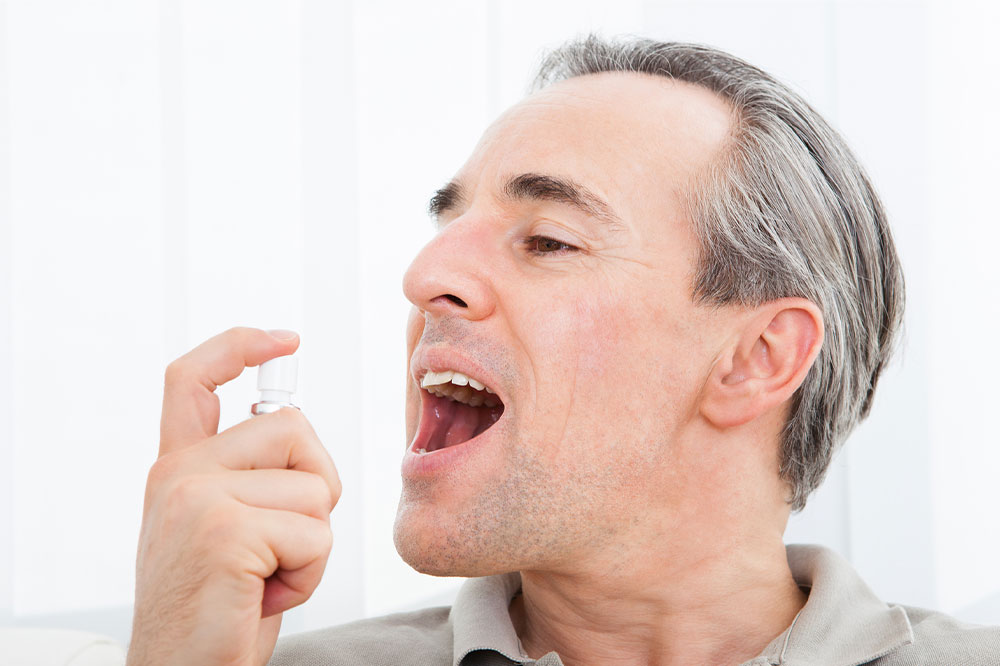
Bad breath – Causes, symptoms, diagnosis, and remedies
Bad breath, or halitosis, is a problem many people face at one point or another. It’s uncomfortable and embarrassing and can make a person self-conscious in social situations. But the good news is that bad breath is often temporary and can be cured easily with a few home remedies. This article discusses the causes, symptoms, and diagnosis of bad breath and a few treatments to help tackle the problem quickly.
Causes
The leading trigger of bad breath is poor oral hygiene; however, it can result from other factors too. Let’s take a closer look at the causes:
- Not brushing and flossing regularly
When one doesn’t brush or floss regularly, food particles and bacteria accumulate on the teeth, gums, and tongue, causing bad breath. - Poor food regimen
Foods with strong odors, like garlic and onions, can cause foul-smelling breath. Sugary snacks can also trigger the problem as sugar promotes bacterial growth in the mouth. - Dry mouth
A dry mouth occurs when saliva production decreases, allowing bacteria to accumulate. It could be caused due to dehydration or certain health conditions.
- Gum disease
If plaque or tartar build up on the teeth, it can cause infection and inflammation of the gums, leading to gum disease, another cause of bad breath.
Symptoms
Understanding the signs of bad breath can help identify the source of the problem and take steps to treat it. A few common symptoms associated with bad breath include:
- An unpleasant smell from the mouth or nose
- A bitter taste in the mouth
- Painful or swollen gums
- Dry mouth
- A white coating on the tongue
- Post-nasal drip
Those experiencing these symptoms should consult a dentist or doctor to identify the cause. Knowing the root cause can help a person take steps to treat the problem and enjoy fresh breath again.
Diagnosis
Confronting bad breath can be awkward and embarrassing, but knowing if one has the problem is essential to treat it effectively. There are several ways to diagnose the issue:
- Smelling one’s own breath
The first way to diagnose the problem is by smelling one’s own breath. The most accurate way to do this is to lick the back of the hand and smell it a few seconds later. - Checking for bacteria
Another method to detect bad breath is to scrape the back of the tongue with a spoon or tongue cleaner. This will help expose any bacteria that may be causing the odor. - Visiting a dentist
One can visit a dentist if they cannot diagnose bad breath at home. Dentists use the halimeter to measure sulfur compounds that cause bad breath for a more accurate diagnosis.
By following these steps, one can determine whether they have bad breath and begin to take the necessary steps to treat it.
Remedies and management
Bad breath can be embarrassing and uncomfortable for those who suffer from it. Fortunately, there are ways to treat the problem and keep the mouth smelling fresh. Let’s take a look:
- Brushing and flossing regularly
The first and best way to treat bad breath is to brush and floss at least twice a day. This will help eliminate bacteria and food particles that cause bad breath. One should use a soft-bristled toothbrush, as hard bristles can damage the gums and teeth. - Mouthwash
Using an antibacterial mouthwash can help reduce the bacteria that cause bad breath. - Tongue scraping
Scraping the tongue regularly can help remove odor-causing bacteria. It should be done after brushing the teeth and before using a mouthwash. - Drinking more water
Since dry mouth is a major cause of bad breath, one should drink sufficient water throughout the day to keep the mouth hydrated. - Regular dental checkups
Visiting the dentist regularly is essential for keeping the mouth clean and healthy. During these checkups, the dentist can examine one’s mouth for problems causing bad breath.
Bad breath can range from mildly unpleasant to unbearable. Whatever the severity, following these steps and consulting with a dentist can treat bad breath and restore mouth freshness.




